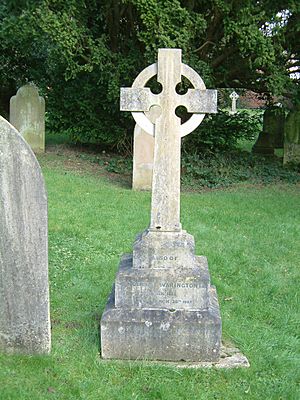Robert Warington (agricultural chemist, born 1838) facts for kids
Robert Warington, Jr. (born August 22, 1838, died March 20, 1907) was an important English scientist. He was an agricultural chemist. This means he studied the chemistry of soil and how it helps plants grow. He was famous for his work on chemicals called phosphates and nitrates in farm soils.
Contents
Early Life and Education
Robert Warington Jr. was the oldest son of another chemist, also named Robert Warington. He learned a lot about chemistry in his father's lab. He also went to lectures by famous scientists like Faraday.
In 1859, Robert Warington Jr. started working at the Rothamsted Experimental Station in Harpenden. He was an unpaid assistant to Sir John Bennet Lawes, who owned the station. From 1862 to 1867, Warington also worked as an assistant chemistry professor at the Royal Agricultural College in Cirencester.
Working at Rothamsted
After leaving Cirencester in 1867, Warington worked for Sir John Lawes again. This time, he was a chemist at Lawes's factories that made fertilizers and other chemicals. He worked there until 1874.
In 1876, Warington returned to Rothamsted Experimental Station. He became a researcher there and stayed until 1891. During this time, he wrote many articles about how soil becomes rich in nitrogen, a process called nitrification.
Discovering Nitrification
In 1879, Robert Warington Jr. made a very important discovery. He was the first to notice that nitrification happens in two steps. This was a big step forward in understanding how plants get nutrients from the soil.
Later Career and Family
In 1891, Warington was invited to give six lectures in the United States. He spoke about his research on soil nitrification at Rothamsted. When he came back to England, he continued his research.
From 1894 to 1897, he was a professor at the University of Oxford. He taught about farming and rural economy.
Robert Warington Jr. was recognized for his work. He became a member of the Chemical Society in 1863 and the Royal Society in 1886. Being a member of these societies is a great honor for scientists.
In 1884, he married Helen Louisa. They had five daughters. One of his daughters, Katherine Warington (born in 1897), later became a famous botanist, studying plants. Robert Warington Jr. is buried with his family in the St Nicholas Churchyard in Harpenden, England.
Images for kids



